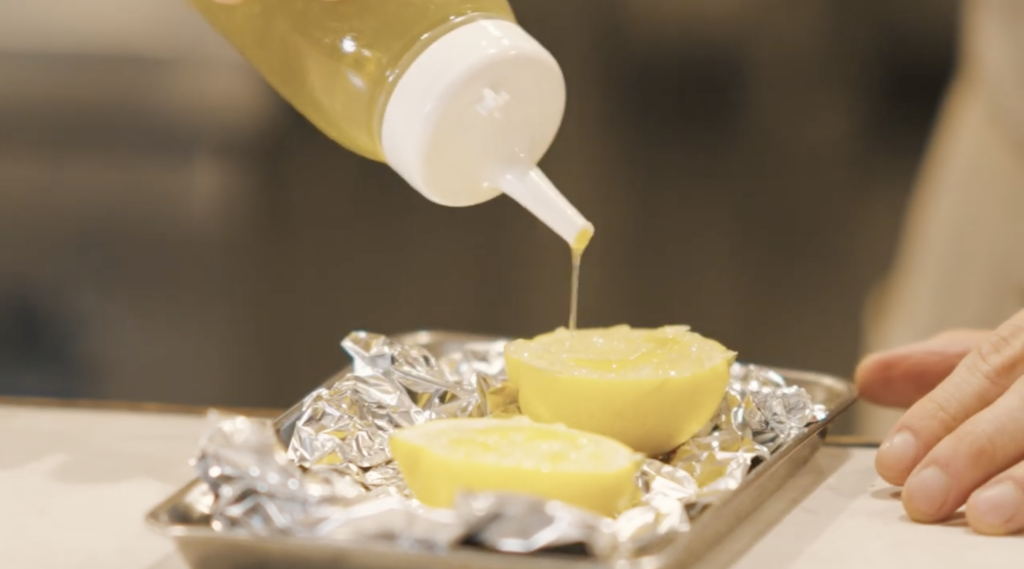Japanese Food Tech Showcases Cultivated Duck Products for Restaurants & Supermarkets
5 Mins Read
Japan’s first cultivated meat company, IntegriCulture, has unveiled several prototype dishes and products made from duck liver cells.
Japanese cellular agriculture specialist IntegriCulture has provided a glimpse of the potential of its cultivated duck liver, as part of several prototypes exhibited at a recent industry session.
With Japan fast becoming a hotspot in Asia’s alternative protein scene, IntegriCulture, an early player in the space, has been working with supporting companies to conduct R&D on foods derived from cell-cultured duck, with financial support from the Ministry of Agriculture, Forestry and Fisheries’ Small and Medium Enterprise Innovation Promotion Program.
The company has simultaneously been developing prototype foods using the cultivated duck, unveiling four as restaurant menu items and three as packaged products.
Foie gras, pani puri, and lemon posset highlight versatility

IntegriCulture held a sensory evaluation session at its research base, the Shonan Health Innovation Park, with around 30 people in attendance. The firm had established a production line for culturing duck cells and began trial production last year, and this event sought to evaluate the potential of its cultivated duck ingredient, which it has christened ‘Craft Essen’.
The restaurant dishes were based on a “fun and bright” theme, each item developed as an amuse-bouche and using about 30% of the cultivated duck ingredient.
One of these was a sweet and sour posset, combining the duck with soy cream to use as a filling in a hollowed-out lemon, which was topped with rock salt. Another innovation mixed the cultivated ingredient with soy cream, this time paired with pears, pink peppercorns, and Narazuke (traditional pickles).
The third restaurant item was a take on the famous Indian street snack, pani puri, served with spices and flowers. The final dish was made by mixing sweet potatoes with the cultivated duck, which was then wrapped in pie crust and baked.
The three packaged food innovations were developed as products that would be bought frozen, with the inclusion rate of cultivated meat varying vastly. For example, one of the products was a spicy blood sausage with 20% cultivated duck, soy milk, vegetable fats, and spices, while another was a liver paste with 80% duck plus cocoa powder (though the high amount of cultivated meat makes it cost-prohibitive).
The third CPG product was reminiscent of foie gras, combining 30% cultivated duck with vegetable oil, soy milk, egg white, and other ingredients to lend a soft texture and rich mouthfeel.
Cultured foie gras is already on the market thanks to Australia’s Vow, which has been selling the ingredient to restaurants in Singapore, and has clearance to do so in Hong Kong too. The firm, which has raised $55M to date, also received preliminary approval in Australia and New Zealand this week.
Another startup hoping to commercialise cultivated foie gras is France’s Gourmey, which last year became the first company to file for approval in Europe, simultaneously applying in the UK, Switzerland, the US, and Singapore. It has reportedly secured $58M from investors so far, and aims to bring its cultivated duck in the form of foie gras to market by 2026.
Cultivated duck impresses taste-testers

The scaffolds used to produce the cultivated duck were built by San-Ei Gen FFI, one of the newest members of IntegriCulture’s CulNet Consortium, which harbours innovative startups to advance production technologies for cultivated meat.
“The unique creamy texture was rich and delicious, and I wanted to eat it with wine,” Atsushi Nakagawa, director of San-Ei Gen FFI, said of the products. “The sensory evaluation session made me realise the great potential of cell-cultured foods as new food ingredients.”
The event was facilitated by the newly formed Craft Essen Council, established to promote the launch and consumer acceptance of the namesake cultivated duck. “Japan has finally reached a phase where we can discuss cultured foods with the general public while showing actual products. It is now important to deepen understanding toward social implementation,” said Tatsuya Shimizu, a professor at Tokyo Women’s Medical University and the council’s chair.
“All the dishes on the restaurant menu had a smooth texture, and I was able to enjoy a new sensation of umami in the desserts and sweets. In addition, the processed foods had a stronger animal-based umami flavour, and I felt that it could be used as a food ingredient in a variety of menus,” said Satoshi Tatsumi, life innovation general manager at Sumitomo Riko.
Cultivated meat advances in Japan

“I hope that, as culture technology advances, consideration will be given to the implementation of this technology in society,” Satoshi added.
His comments come just as his firm’s sister company, Sumitomo Corporation, has partnered with British startup Hoxton Farms to commercialise its cultivated fat product in Japan and other Asian countries.
Hoxton Farms and Sumitomo are consulting with the Japan Association for Cellular Agriculture (JACA) – also a member of the Craft Essen Council – which will be pivotal in shaping the regulatory and social acceptance of cultivated meat in the country.
A 2024 survey found that 42% of Japanese consumers are willing to try cultivated meat products, but the creation of government regulations is key for 44% of those who are unsure about their safety aspects.
IntegriCulture, meanwhile, is Japan’s first cultivated meat company, and released a Cell-Cultured Meat Starter Kit on its B2B marketplace, Ocatté Base, last year. This included an oxygen-permeable bioreactor co-created with Sumitomo Riko.
The firm has received $16.4M in equity funding and gained a ¥1.87B ($13.1M) grant from the Japanese government to advance the CulNet platform and make its developments open-source. Earlier this year, it received a special overdraft loan of ¥100M ($685,000) from Mizuho Bank.



